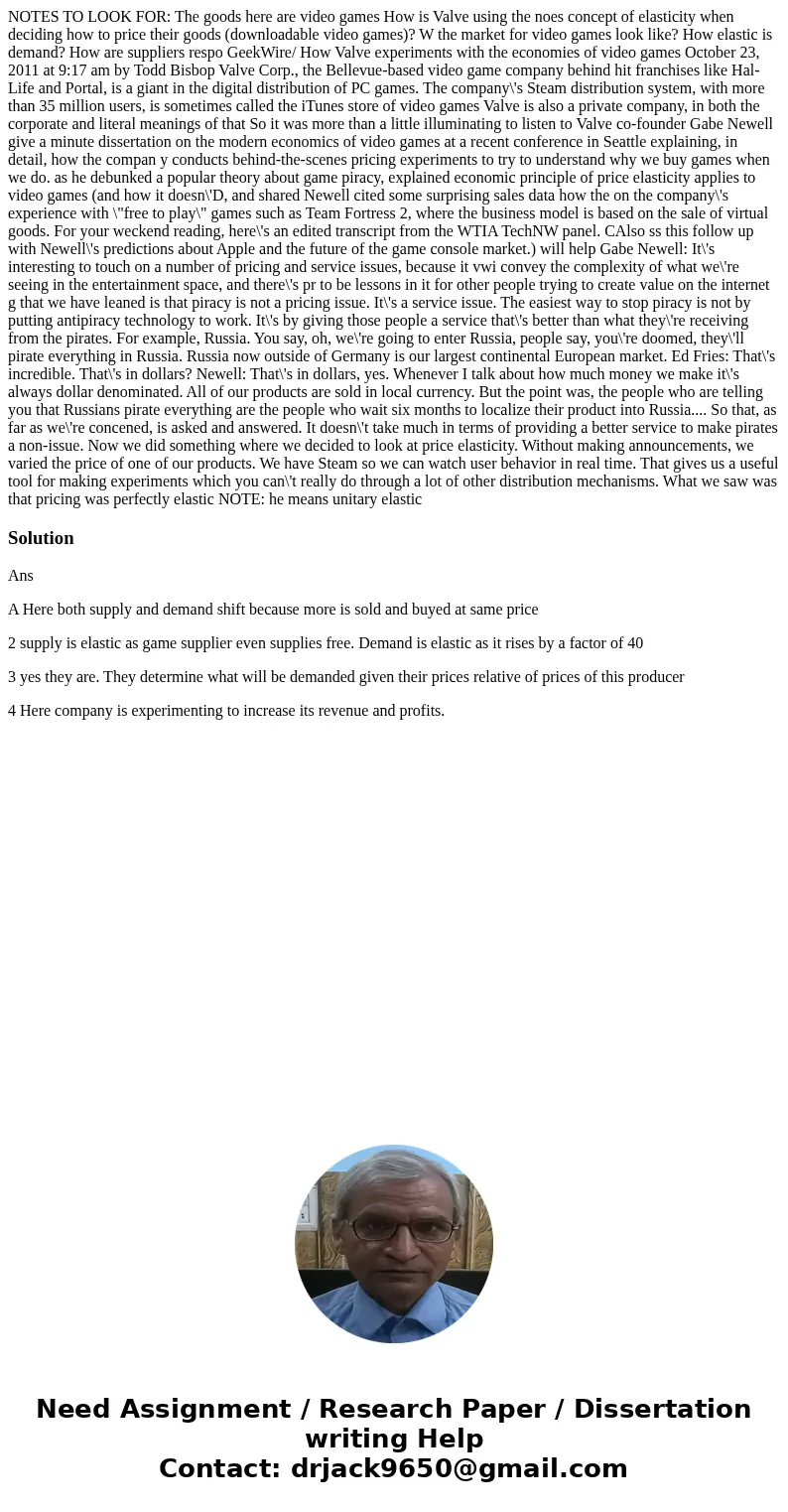NOTES TO LOOK FOR The goods here are video games How is Valv
NOTES TO LOOK FOR: The goods here are video games How is Valve using the noes concept of elasticity when deciding how to price their goods (downloadable video games)? W the market for video games look like? How elastic is demand? How are suppliers respo GeekWire/ How Valve experiments with the economies of video games October 23, 2011 at 9:17 am by Todd Bisbop Valve Corp., the Bellevue-based video game company behind hit franchises like Hal-Life and Portal, is a giant in the digital distribution of PC games. The company\'s Steam distribution system, with more than 35 million users, is sometimes called the iTunes store of video games Valve is also a private company, in both the corporate and literal meanings of that So it was more than a little illuminating to listen to Valve co-founder Gabe Newell give a minute dissertation on the modern economics of video games at a recent conference in Seattle explaining, in detail, how the compan y conducts behind-the-scenes pricing experiments to try to understand why we buy games when we do. as he debunked a popular theory about game piracy, explained economic principle of price elasticity applies to video games (and how it doesn\'D, and shared Newell cited some surprising sales data how the on the company\'s experience with \"free to play\" games such as Team Fortress 2, where the business model is based on the sale of virtual goods. For your weckend reading, here\'s an edited transcript from the WTIA TechNW panel. CAlso ss this follow up with Newell\'s predictions about Apple and the future of the game console market.) will help Gabe Newell: It\'s interesting to touch on a number of pricing and service issues, because it vwi convey the complexity of what we\'re seeing in the entertainment space, and there\'s pr to be lessons in it for other people trying to create value on the internet g that we have leaned is that piracy is not a pricing issue. It\'s a service issue. The easiest way to stop piracy is not by putting antipiracy technology to work. It\'s by giving those people a service that\'s better than what they\'re receiving from the pirates. For example, Russia. You say, oh, we\'re going to enter Russia, people say, you\'re doomed, they\'ll pirate everything in Russia. Russia now outside of Germany is our largest continental European market. Ed Fries: That\'s incredible. That\'s in dollars? Newell: That\'s in dollars, yes. Whenever I talk about how much money we make it\'s always dollar denominated. All of our products are sold in local currency. But the point was, the people who are telling you that Russians pirate everything are the people who wait six months to localize their product into Russia.... So that, as far as we\'re concened, is asked and answered. It doesn\'t take much in terms of providing a better service to make pirates a non-issue. Now we did something where we decided to look at price elasticity. Without making announcements, we varied the price of one of our products. We have Steam so we can watch user behavior in real time. That gives us a useful tool for making experiments which you can\'t really do through a lot of other distribution mechanisms. What we saw was that pricing was perfectly elastic NOTE: he means unitary elastic 
Solution
Ans
A Here both supply and demand shift because more is sold and buyed at same price
2 supply is elastic as game supplier even supplies free. Demand is elastic as it rises by a factor of 40
3 yes they are. They determine what will be demanded given their prices relative of prices of this producer
4 Here company is experimenting to increase its revenue and profits.

 Homework Sourse
Homework Sourse